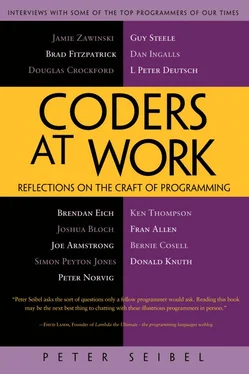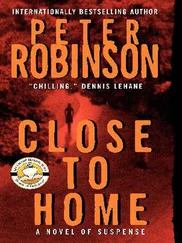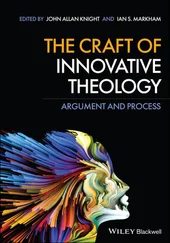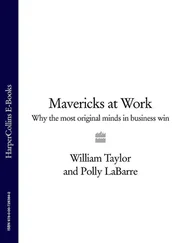Peter Seibel - Coders at Work - Reflections on the craft of programming
Здесь есть возможность читать онлайн «Peter Seibel - Coders at Work - Reflections on the craft of programming» весь текст электронной книги совершенно бесплатно (целиком полную версию без сокращений). В некоторых случаях можно слушать аудио, скачать через торрент в формате fb2 и присутствует краткое содержание. Жанр: Программирование, на английском языке. Описание произведения, (предисловие) а так же отзывы посетителей доступны на портале библиотеки ЛибКат.
- Название:Coders at Work: Reflections on the craft of programming
- Автор:
- Жанр:
- Год:неизвестен
- ISBN:нет данных
- Рейтинг книги:3 / 5. Голосов: 1
-
Избранное:Добавить в избранное
- Отзывы:
-
Ваша оценка:
- 60
- 1
- 2
- 3
- 4
- 5
Coders at Work: Reflections on the craft of programming: краткое содержание, описание и аннотация
Предлагаем к чтению аннотацию, описание, краткое содержание или предисловие (зависит от того, что написал сам автор книги «Coders at Work: Reflections on the craft of programming»). Если вы не нашли необходимую информацию о книге — напишите в комментариях, мы постараемся отыскать её.
Coders at Work
Founders at Work
Coders at Work: Reflections on the craft of programming — читать онлайн бесплатно полную книгу (весь текст) целиком
Ниже представлен текст книги, разбитый по страницам. Система сохранения места последней прочитанной страницы, позволяет с удобством читать онлайн бесплатно книгу «Coders at Work: Reflections on the craft of programming», без необходимости каждый раз заново искать на чём Вы остановились. Поставьте закладку, и сможете в любой момент перейти на страницу, на которой закончили чтение.
Интервал:
Закладка:
Seibel:Meaning, profiling?
Ingalls:Yeah. So there was a program that would gobble up a Fortran program and insert counters at every branch point. I made a fancier version of it that also had a timer-interrupt process so that it would keep track of how much real time was spent in various parts of the program.
Seibel:So basically a sampling profiler?
Ingalls:Right. And what was notable about these was that until that time profiling had typically been in terms of memory locations, and it took a quantum mechanic to know what the results were telling you, whereas this came out in terms of your source code and you could see, “Oh, it’s spending all its time here.” This was immediately usable to the user. I recognized, “Whoa! people could be using this.”
Seibel:So you ran your business for a while—is that what you were doing up until you went to Xerox PARC?
Ingalls:Pretty much. In fact, that’s how I ended up at PARC. I wound up spending a bunch of time in local service bureaus. There was a Control Data one and an IBM one. And I would take my program around to these various places and make sure that it ran on their particular computer.
Seibel:And this was profiling Fortran code still?
Ingalls:Yeah. But I found out an interesting thing. Who were the big Fortran users? They’re big scientific computation users. And who are they all working for? They’re all working for the government. Do they care how efficient their program is? Not really. What they really want to do is to show that the computer is overloaded and that they need a new computer and more money. I showed this at a couple of companies and they said, “Jeez, if you had this for COBOL it would be great.”
Seibel:Because no one’s going to give them more money to buy big iron for COBOL.
Ingalls:Exactly. So I wrote the same thing for COBOL. This was my immersion into COBOL. I remember writing the completion routine that would put together the statistics from the timer interrupts. The completion routine wanted to be written in the same language as the thing you’re measuring so that it could all be loaded in together. I may be the only person who’s ever written a hash table in COBOL.
Anyway, that sold great. I can remember several sales calls where I’d go out and as a demo I’d run it on one of their programs and, in the course of the demo, would show them how to save more money than the program cost.
In the process of going around to these service bureaus, I wound up at the CDC service bureau in Stanford industrial park—typically you’re working late at night because that’s when it was less expensive—there was another guy there who had a Fortran program to do speech recognition. He had various speech samples and his program analyzed the spectra and grouped the phonemes and stuff like that. I started talking to him and I said, “Well, jeez, you want to run my program on yours?” So we did that and parted company.
He called me up a couple of weeks later and said, “I’ve been hired by Xerox to do a speech-recognition project and I’ve got no one to help me with the nitty-gritty; would you like to work with me?” So I started consulting with him. That was George White, who went on for a long time to do speech recognition. That’s how I got in with Xerox and also with Alan Kay, because it turned out that my office was across the hall from Alan’s and I kept hearing conversations that I was more interested in than speech recognition.
Seibel:Was the domain of speech recognition not that interesting or was it something about the programming involved?
Ingalls:Oh, it was interesting—it was fascinating. I ended up building up a whole personal-computing environment on this Sigma 3 minicomputer. It used card decks and Fortran was the main thing I had to work with. Out of that I built an interactive environment. I wrote a text editor in Fortran and then something so we could start submitting stuff remotely from a terminal. It wound up being a nice little computing environment, just done in this sort of strange way.
Seibel:This desire for an interactive environment is a theme that’s come up a bunch of times in your career. For example, you wrote the first Smalltalk in BASIC because that was the interactive environment you had at hand. Where did you get that idea that given a problem to solve, the first thing you need is an interactive programming environment?
Ingalls:That’s a good question. I think anything where you get immediate gratification feeds on itself by definition.
Seibel:So what was that first place that you had that immediate gratification?
Ingalls:There were a couple of experiences. I had a chance to work with a semi-interactive PL/I. And a friend of mine was working at an IBM where they had an interactive APL environment. I can’t remember which of those was first. I really remember the APL one. That affected me in a number of ways because of both the immediacy of interaction—seeing your results come back—and the expression evaluation, which is really different from Fortran’s statement-oriented programming.
You still see that now, it’s amazing—the whole C/C++/Java tradition, although it goes in an object-oriented direction, is still statement-oriented. But if it’s convenient to make expressions, it really makes the experience different. To me it brings the mathematics to life more. Anyway, it was one of those two. When I got to Xerox there wasn’t much interactive except the Lisp guys’ stuff. I happened not to be into Lisp. Things would have been different if I were, I expect.
Seibel:How so?
Ingalls:I think I would have gone completely in that direction. And by not having gone in that direction, it left me wanting to do that kind of thing in a different way. I think what I worked on with Alan had that same kind of nice, lively, expression feel, but it included the notion of objects and messages more naturally.
I think if I had been as comfortable in a system like Lisp, I never would have bothered. I would have tried working around it to get objects, but starting with the notions of objects from the get-go and then making that nice and interactive and convenient was, I think, a contribution.
Seibel:Alan Kay has said that both Lisp and Smalltalk have the problem that they’re so good they eat their children. If you had known Lisp, then Smalltalk would have been the first eaten child.
Ingalls:Maybe so.
Seibel:So that’s a nice example of the advantage of some ignorance; it leaves some room for creativity. But sometimes it feels like ignorance is endemic in this industry—that people are unaware of things and wheels are constantly being reinvented with pointy corners.
Ingalls:That’s true.
Seibel:Should we be trying to fix that? Is it just a price that we have to pay so that people can have room for creativity? Or would we be better off if people were a little more aware of what else is going on?
Ingalls:I’m an embrace-diversity guy. The example we just went through, I think, says, “No, let people go whatever way they want.” There will be waste from ignorance, but natural selection will take care of straightening things out. And you will get these occasional sports that take you into the future.
I can think of lots of areas where trying to standardize, trying to all go in one direction, has suppressed creativity. I work at a company that’s supported by Java, so I’m not going to go very far with this, but it is the case that when Java came out—the easiest way I had of measuring it was looking at what went on at OOPSLA—when Java came out not only did work slow down and even maybe come to a halt on other object-oriented programming languages but even in dynamic programming in general. I think that was a loss.
Читать дальшеИнтервал:
Закладка:
Похожие книги на «Coders at Work: Reflections on the craft of programming»
Представляем Вашему вниманию похожие книги на «Coders at Work: Reflections on the craft of programming» списком для выбора. Мы отобрали схожую по названию и смыслу литературу в надежде предоставить читателям больше вариантов отыскать новые, интересные, ещё непрочитанные произведения.
Обсуждение, отзывы о книге «Coders at Work: Reflections on the craft of programming» и просто собственные мнения читателей. Оставьте ваши комментарии, напишите, что Вы думаете о произведении, его смысле или главных героях. Укажите что конкретно понравилось, а что нет, и почему Вы так считаете.












